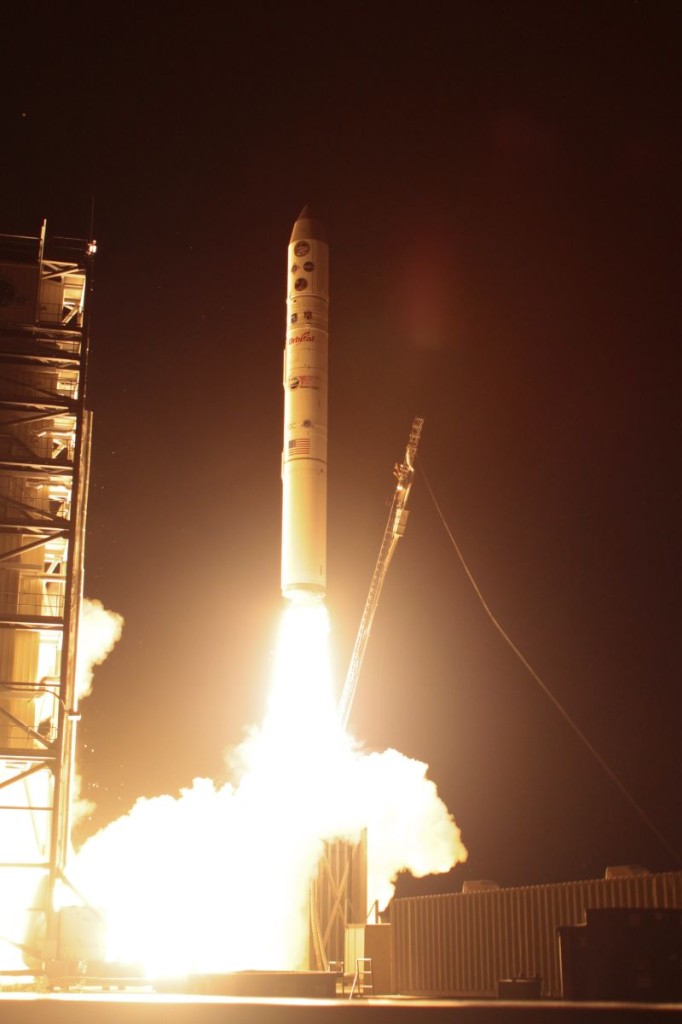NASA’s latest trek to the moon
Highly anticipated NASA rocket launched from Wallops Island
Photo by: www.NASA.gov
Above NASA’s rocket LADEE launches from the Wallops Island facility.
On Friday, September 6th a small burst of light trailed across the horizon of the night sky, treating hundreds of spectators along the East Coast to a front row seat to the highly anticipated launch of NASA’s latest spacecraft, LADEE. The rocket, which is roughly the size of a small car, was expected to be visible at several areas along the East coast as it made its way over the Atlantic, provided the night offered a clear sky. It did not disappoint. Biology teacher, Mr. Sean Blair one of many excited spectators, who had learned of the rocket through a Facebook post had just barely spotted it through the window of his house and describe the sight as, “a triangular orange flicker flame kind of object.” For those outside the projected viewing area, NASA provided a live streaming video of the launch itself.
The Lunar Atmosphere Dust Environment Explorer, also known as LADEE, was launched into the air right on schedule at 11:27 p.m. from NASA’s Wallops Flight Facility in Virginia. This spacecraft, which weighs around 844 pounds, cost the NASA program 280 million dollars overall to create, launch, and monitor. It will be launched using an unmanned Minotaur V rocket, a five-stage, solid-fuel booster, which as a result of a treaty with Russia, can only be launched from certain sites like the Wallops Island facility. This was one of the leading reasons behind why the rocket was launched at the Wallops facility as opposed to the usual Cape Canaveral facility in Florida, where all former moon missions had been launched.
While LADEE was not the first rocket to be launched from the facility at Wallops Island, it was the first to be sent past the Earth’s atmosphere to the moon. However, in order for the rocket to reach the moon’s orbit, it must first make three full laps around Earth. Once it reaches the moon, which is supposed to occur around October 6th, LADEE will orbit around the moon for what will be an estimated one hundred day period, collecting information on the thin lunar atmosphere. Using four instruments it will gather information not only of the composition of the atmosphere but the way in which lunar dust moves. A special laser attached to the probe in particular will help revolutionize the ability of LADEE to efficiently relay the data it collects. This could provide important information for future missions, considering a major concern for scientist is lunar dust because of the way in which it can clog up the lunar landers and rovers.
Once the data has been collected, LADEE’s orbit will gradually be lowered until it will intentionally collide with the surface of the moon. This suicide mission will end with the destruction of LADEE in order to cause a flare of dust to erupt from the moon’s surface.


